In the world of electronics, discrete electronic components play a pivotal role, serving as the fundamental building blocks of various circuits and devices.
Understanding the basics of discrete electronic components is crucial for anyone interested in electronics, whether as a hobbyist, student, or professional.
This comprehensive guide aims to elucidate the concept of discrete electronic components, exploring their definition, types, functions, and applications in detail.
What Are Discrete Electronic Components
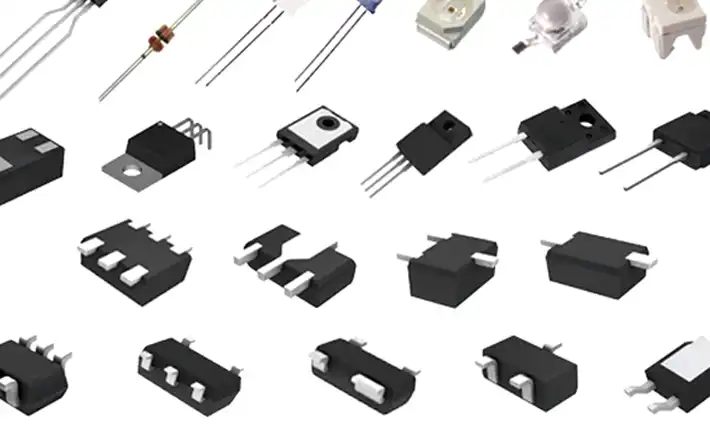
Discrete electronic components definition:
Discrete electronic components refer to individual electronic devices or parts that perform specific functions within an electronic circuit.
Unlike integrated circuits (ICs), which combine multiple components on a single semiconductor substrate, discrete components are standalone units. They are typically packaged in standardized forms and can be easily identified and replaced within a circuit.
Discrete electronic components encompass a wide range of devices, including diodes, transistors, resistors, capacitors, inductors, and various types of sensors and switches. Each component serves a distinct purpose within a circuit, such as controlling current flow, storing energy, amplifying signals, or switching between different states.
These components are fundamental building blocks of electronic circuits, allowing engineers and designers to create customized and specialized systems tailored to specific applications.
Discrete electronic components are essential in various industries, including telecommunications, automotive, aerospace, consumer electronics, medical devices, and industrial automation. They form the foundation of modern electronics and enable the development of innovative technologies that drive progress and innovation in society.
Key Characteristics of Discrete Electronic Components
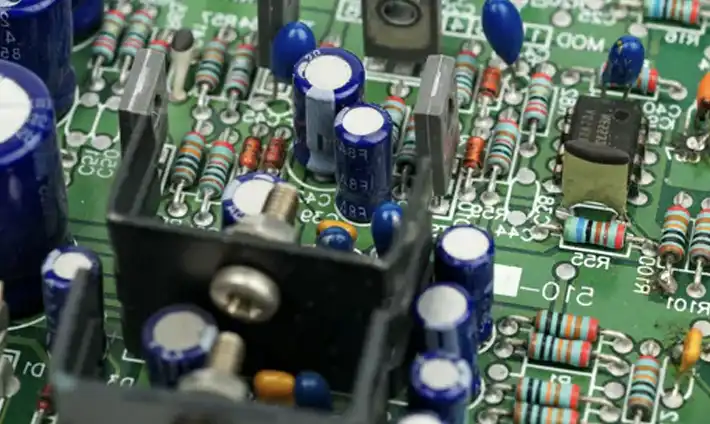
The key characteristics of discrete electronic components highlight their unique attributes and importance within electronic circuits.
Let’s delve deeper into each characteristic:
- Individuality: Discrete electronic components function independently within a circuit. Each component performs a specific task or operation, contributing to the overall functionality of the circuit. This individuality allows for precise control and customization of electronic systems, as components can be selectively added, removed, or replaced to achieve desired outcomes.
- Modularity: Discrete components offer modularity, meaning they can be combined in various configurations to create complex circuits tailored to specific applications. This modular nature facilitates the design and assembly of electronic systems, allowing engineers and designers to mix and match components to meet diverse requirements. Moreover, modularity enhances scalability, as circuits can be easily expanded or modified by adding or rearranging components as needed.
- Identifiability: Discrete components are distinguishable by their physical appearance, electrical properties, and specifications. Each component is labeled with standardized markings, such as part numbers, value ratings, and polarity indicators, enabling easy identification and selection during circuit design and troubleshooting. This identifiability simplifies maintenance and repair tasks, as faulty components can be quickly identified and replaced without extensive diagnostic procedures.
- Versatility: Discrete electronic components exhibit versatility in terms of their applications and functionality. They can be employed across a wide range of electronic devices and systems, spanning from simple passive components like resistors and capacitors to active components like transistors and integrated circuits. This versatility allows engineers and designers to leverage discrete components creatively in various projects, from basic electronics experiments to advanced circuit designs for industrial, automotive, aerospace, and consumer electronics applications.
In essence, the key characteristics of discrete electronic components underscore their significance as essential building blocks of electronic circuits, offering individuality, modularity, identifiability, and versatility to enable innovation and advancement in the field of electronics.
Types of Discrete Electronic Components
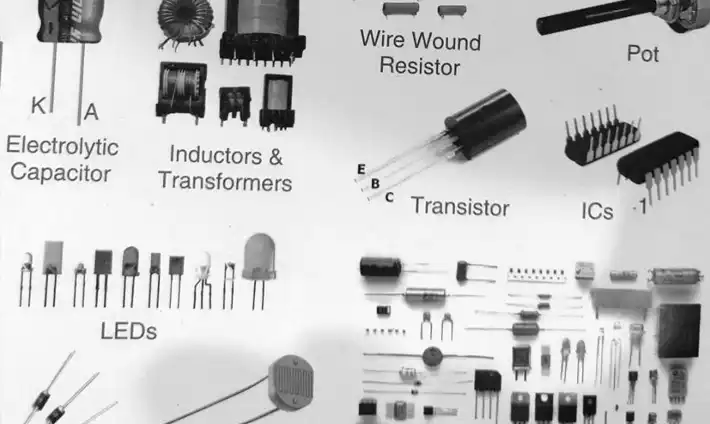
Here are many various types of electronic components, and discrete electronic components encompass a diverse array of devices, each serving specific functions within electronic circuits.
Let’s explore the various types of discrete electronic components in more detail:
Diodes:
Diodes are semiconductor devices that permit the flow of electrical current in one direction while blocking it in the opposite direction. They are commonly used in rectification circuits to convert alternating current (AC) to direct current (DC), as well as in signal modulation, voltage regulation, and switching applications.
Transistors:
Transistors are semiconductor devices that amplify or switch electronic signals and electrical power. They come in different types, including bipolar junction transistors (BJTs) and field-effect transistors (FETs), and find extensive use in amplifiers, oscillators, digital logic circuits, and power control systems.
Resistors:
Resistors are passive electronic components that impede the flow of electrical current. They are utilized to control the amount of current flowing through a circuit, regulate voltage levels, and divide voltage. Resistors come in various types, such as fixed resistors, variable resistors (potentiometers), and thermistors.
Capacitors:
Capacitors are devices used to store and release electrical energy in the form of an electric field. They consist of two conductive plates separated by a dielectric material. Capacitors are employed in filtering, decoupling, timing, and energy storage applications, and they come in different types, including ceramic capacitors, electrolytic capacitors, and tantalum capacitors.
Inductors:
Inductors are passive electronic components that store energy in the form of a magnetic field when current flows through them. They resist changes in current and are used in filters, oscillators, signal processing circuits, and power supplies. Inductors are characterized by their inductance, which determines the rate of change of current in a circuit.
Integrated Circuits (ICs):
Integrated circuits are complex electronic devices consisting of multiple interconnected electronic components fabricated on a single semiconductor substrate. They can contain thousands to billions of transistors, capacitors, resistors, and other components, and are used in a wide range of applications, including microprocessors, memory chips, and analog signal processing circuits.
Semiconductors:
Semiconductors are materials with electrical conductivity between that of conductors and insulators. They are the foundation of electronic devices and components, serving as the core material in transistors, diodes, and integrated circuits. Semiconductors play a crucial role in modern electronics, enabling the miniaturization, efficiency, and performance of electronic systems.
Here’s a table summarizing the types of discrete electronic components:
| Type | Description |
|---|---|
| Diodes | Semiconductor devices that allow current flow in one direction and block it in the opposite direction. Used in rectification, modulation, and switching applications. |
| Transistors | Semiconductor devices that amplify or switch electronic signals. Commonly used in amplifiers, oscillators, and digital logic circuits. |
| Resistors | Passive components that impede the flow of electrical current. Used for current control, voltage regulation, and signal conditioning. |
| Capacitors | Devices that store and release electrical energy in an electric field. Employed in filtering, decoupling, timing, and energy storage applications. |
| Inductors | Passive components that store energy in a magnetic field when current flows through them. Utilized in filters, oscillators, and power supplies. |
| Integrated Circuits (ICs) | Complex devices containing multiple interconnected electronic components on a single semiconductor substrate. Used in microprocessors, memory chips, and signal processing. |
| Semiconductors | Materials with electrical conductivity between conductors and insulators. Serve as the core material in transistors, diodes, and integrated circuits. |
Discrete Electronic Components and Functions
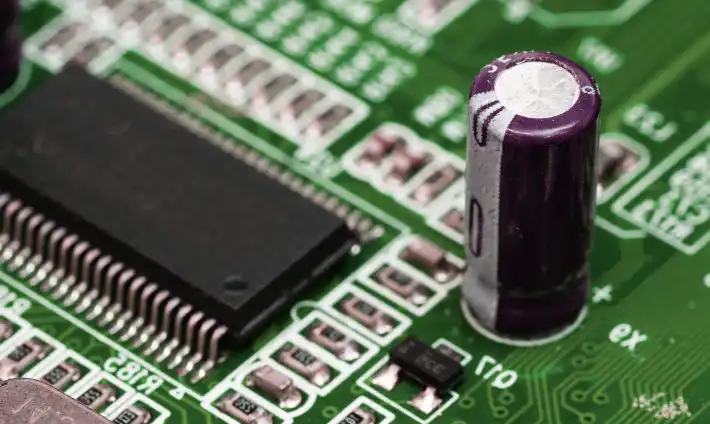
Discrete electronic components perform a wide range of functions within electronic circuits, each contributing to the overall operation and performance of the system. Here are some common functions performed by discrete electronic components:
Signal Amplification:
Transistors and operational amplifiers (op-amps) are often used to amplify weak electrical signals, boosting their amplitude while maintaining signal integrity. This is essential in audio amplifiers, communication systems, and sensor circuits.
Signal Conditioning:
Resistors, capacitors, and inductors are employed to condition electrical signals by filtering, shaping, or modifying their characteristics. For example, filters are used to remove unwanted frequencies, while impedance matching circuits ensure efficient signal transfer between components.
Signal Modulation and Demodulation:
Diodes, transistors, and integrated circuits are utilized to modulate signals for transmission and demodulate them upon reception. This is crucial in radio communication, where amplitude modulation (AM), frequency modulation (FM), and phase modulation (PM) techniques are employed.
Voltage Regulation:
Zener diodes, voltage regulators, and voltage divider circuits are employed to regulate and stabilize voltage levels within a circuit. This ensures that sensitive components receive consistent power supply voltages, preventing damage and ensuring reliable operation.
Current Limiting and Control:
Resistors and transistors are used to limit and control the flow of electrical current within a circuit. Current-limiting resistors protect components from excessive current, while current sources and sinks regulate current flow in specific parts of the circuit.
Energy Storage and Release:
Capacitors serve as energy storage devices, storing electrical energy in an electric field and releasing it when needed. This is utilized in timing circuits, energy storage systems, and power factor correction applications.
Switching:
Transistors and relays act as electronic switches, allowing or blocking the flow of current in a circuit. They are used in digital logic circuits, power control systems, and automated switching applications.
Temperature Sensing and Compensation:
Thermistors and temperature-sensitive resistors are employed to sense changes in temperature and compensate for temperature variations within a circuit. This is crucial in temperature measurement, thermal management, and temperature-controlled systems.
Light Emission and Detection:
Light-emitting diodes (LEDs) and photodiodes are utilized for light emission and detection applications. LEDs are used in displays, indicators, and lighting systems, while photodiodes are employed in optical communication, proximity sensing, and light detection circuits.
Frequency Generation and Control:
Oscillators, crystals, and resonant circuits generate and control precise frequencies required in timing, synchronization, and frequency modulation applications. These components are essential in clock circuits, radio frequency (RF) systems, and frequency synthesizers.
Applications of Discrete Electronic Components
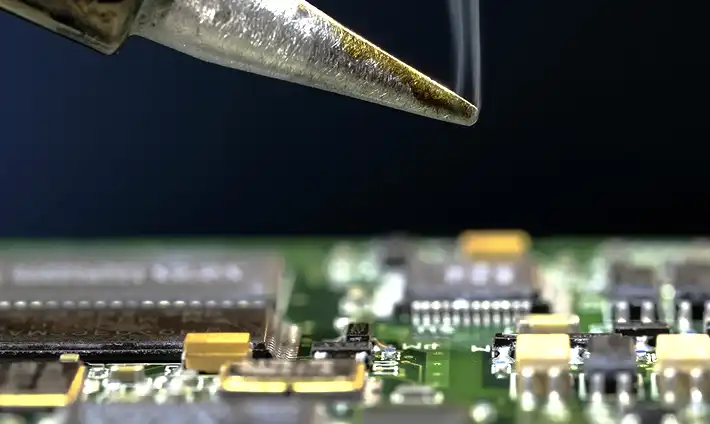
Discrete electronic components find applications across various industries and domains, owing to their versatility, reliability, and ease of integration. Some common applications include:
Consumer Electronics:
Discrete components are extensively used in consumer electronics such as smartphones, tablets, laptops, and televisions. They form essential parts of circuits for power management, signal processing, and user interface control.
Automotive:
In the automotive industry, discrete electronic components are employed in vehicle systems for engine management, safety features, entertainment systems, and lighting. They contribute to the efficient operation and performance of modern automobiles.
Telecommunications:
Telecommunication networks rely on discrete components for signal processing, amplification, modulation, and filtering. These components are integral to the infrastructure supporting voice, data, and video communication systems.
Industrial Automation:
Discrete electronic components play a vital role in industrial automation and control systems. They are used in programmable logic controllers (PLCs), motor drives, sensors, and actuators to monitor and regulate manufacturing processes.
Aerospace and Defense:
Aerospace and defense applications utilize discrete components in avionics, radar systems, navigation equipment, and communication systems. These components meet stringent requirements for reliability, durability, and performance in challenging environments.
Medical Devices:
Medical devices rely on discrete components for diagnostic, monitoring, and treatment purposes. They are incorporated into devices such as patient monitors, imaging equipment, infusion pumps, and prosthetic devices to ensure accurate and reliable operation.
Renewable Energy:
Discrete electronic components are integral to renewable energy systems such as solar panels, wind turbines, and battery storage systems. They facilitate power conversion, regulation, and distribution in sustainable energy applications.
IoT (Internet of Things):
The IoT ecosystem relies on discrete components for connecting and controlling smart devices and sensors. These components enable data acquisition, processing, and communication in interconnected IoT networks for home automation, healthcare monitoring, and industrial IoT applications.
Research and Development:
Discrete components are used in laboratories and research facilities for prototyping, experimentation, and innovation in electronics. They provide researchers and engineers with the flexibility to design and test novel circuits and systems for future technologies.
Discrete electronic components play a crucial role in enabling technological advancements and innovation across diverse industries, contributing to the development of modern society and enhancing the quality of life for people around the world.
Electronics With Discrete Components Solutions
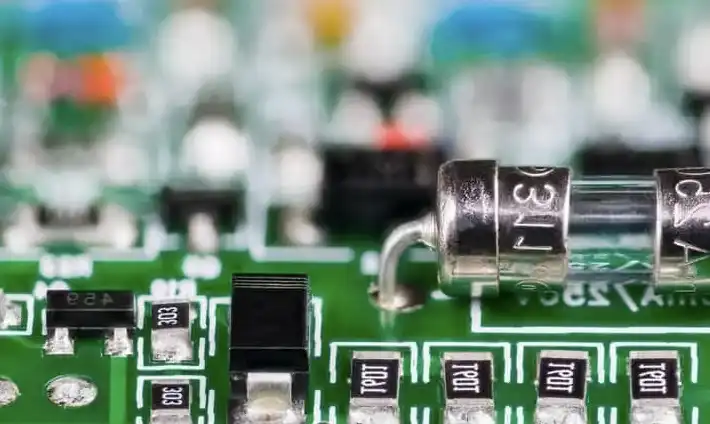
Electronics solutions utilizing discrete components offer numerous advantages and find applications across a wide range of industries and domains.
Here are some examples of electronic systems and solutions that leverage discrete components:
Audio Amplifiers:
Discrete components such as transistors, resistors, and capacitors are used in audio amplifiers to amplify weak audio signals from sources such as microphones or musical instruments. These amplifiers are commonly found in audio equipment, including stereo systems, musical instruments, and public address systems.
Power Supplies:
Discrete electronic components play a crucial role in designing power supply circuits that convert AC voltage from mains power into DC voltage suitable for electronic devices. Components like diodes, capacitors, and voltage regulators are utilized to rectify, filter, and regulate the output voltage, ensuring stable and reliable power delivery to electronic systems.
Sensor Interfaces:
Sensors measure various physical parameters such as temperature, pressure, light, and motion. Discrete components are used in sensor interface circuits to condition sensor signals, amplify weak signals, and provide appropriate voltage levels for further processing by microcontrollers or analog-to-digital converters (ADCs).
LED Drivers:
Light-emitting diodes (LEDs) require precise current regulation to ensure consistent brightness and longevity. Discrete components like transistors, resistors, and capacitors are employed in LED driver circuits to control the current flowing through the LEDs, enabling efficient and reliable illumination in applications such as lighting fixtures, display panels, and signage.
Motor Control:
Discrete components are utilized in motor control circuits to regulate the speed, direction, and torque of electric motors. Components like transistors, diodes, and resistors are employed in motor driver circuits to control the flow of current to the motor windings, facilitating precise control over motor operation in applications ranging from robotics to industrial automation.
Communications Systems:
Discrete components play a vital role in communications systems, including radio frequency (RF) transmitters and receivers, wireless modems, and telecommunication networks. Components such as filters, amplifiers, oscillators, and mixers are used to process and transmit signals across various frequencies and communication channels.
Security Systems:
Discrete electronic components are integrated into security systems for intrusion detection, access control, and surveillance. Components like sensors, switches, and signal conditioning circuits are utilized to monitor environmental conditions, detect motion or unauthorized access, and trigger alarms or notifications.
Frequently Asked Questions (FAQs)
- What role do diodes play in electronic circuits? Diodes serve multiple functions, including rectification, signal modulation, and voltage regulation.
- How do resistors control the flow of current? Resistors impede the flow of electrical current in a circuit, regulating voltage levels and limiting current flow.
- What distinguishes capacitors from other electronic components? Capacitors store and release electrical energy, acting as temporary storage devices in electronic circuits.
- Are integrated circuits considered discrete electronic components? No, integrated circuits combine multiple electronic components on a single semiconductor substrate and are classified as complex electronic devices.
- What are the primary applications of sensors in electronics? Sensors are used for detecting and measuring various physical parameters such as temperature, pressure, humidity, and proximity in electronic systems.
- How do transformers facilitate voltage regulation? Transformers utilize electromagnetic induction to transfer electrical energy between two or more circuits, enabling voltage transformation and regulation.
Conclusion
In conclusion, discrete electronic components form the foundation of modern electronics, enabling the creation of sophisticated circuits and devices. By understanding the principles and applications of these components, enthusiasts and professionals alike can embark on exciting electronic projects and innovations.